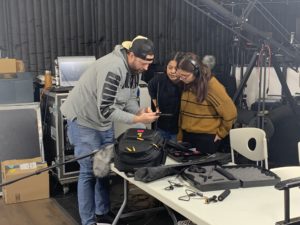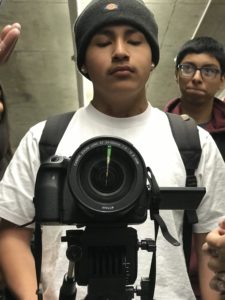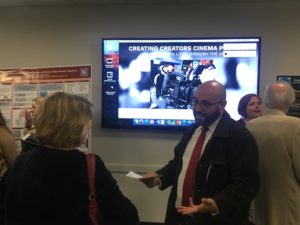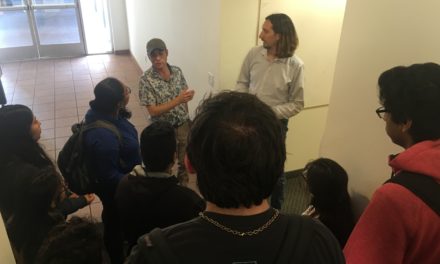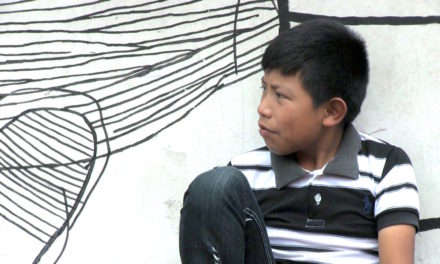By Christian Quintero, Ed.D., Contributing Writer
In 2011, Hipolito “Polo” Muñoz met with the Principal of the Los Angeles School of Global Studies (LASGS) to talk about an elective filmmaking course to pilot at the school. I was an eleventh-grade teacher that year and saw how the students in the class appreciated the learning and recognized an avenue for students to develop their creativity and visual storytelling skills. In 2012, I was hired as principal for LASGS and continued the school’s partnership with Polo and Jessica Just, recognizing the need for the applied learning environment created in the filmmaking course that also supported our school’s project-based learning method of instruction.
In 2015, I was accepted to Loyola Marymount University’s School of Education, the doctoral program focused on Educational Leadership for Social Justice. It was an assignment for the qualitative studies class that prompted my interest in studying the filmmaking program created by Polo and Jessica. I conducted an informal focus group with the students and was immediately fascinated by the learning they described in their filmmaking class. Students spoke strongly about the collaboration skills they acquired, how they had to solve problems collectively, and most importantly, how they had to learn how to manage their emotions to be an effective team member. I wanted to document the student’s learning and tell the story of Creating Creators Cinema Project that highlights the transformation that takes place in the classroom.
Through my research, I found the dearth of arts programs in urban schools and the long-term negative impact associated with the lack of access to the creative arts on students of color. Since federal legislation such as No Child Left Behind Act of 2001 (https://www2.ed.gov/nclb/landing.jhtml) and the Recovery and Reinvestment Act of 2009 (https://www2.ed.gov/programs/racetothetop/index.html), reforms have prioritized accountability and testing gains for struggling schools, often times significantly reducing access to arts programs for students in urban schools. Students who do not have access to arts programs, do not see themselves in the creative arts field in their adulthood.
According to the 2019 Otis report (https://www.otis.edu/creative-economy/2019), workers that are directly related to the creative industries as well as indirectly related to the creative industries represent 19.7% of Los Angeles County’s total employment. For the state of California, the creative industries support 2.6 million jobs which constitutes roughly 15.4% of California’s total employment. Reducing access to arts programs impacts students’ future in the creative industries.
Programs, like the one Creating Creators established, help bridge the gap between schools and the creative industries. By integrating professional filmmakers into the classroom setting, students receive access to both the creative goals of the school along with the professional atmosphere of a filmmaking environment. Students actively take on the role of writer, director, producer, cinematographer, editor, actor, and/or creator, and begin to create their very own visual story. Students learn to work collaboratively on a shared vision and more importantly learn that their stories are valued and are worthy to tell to larger audiences.



